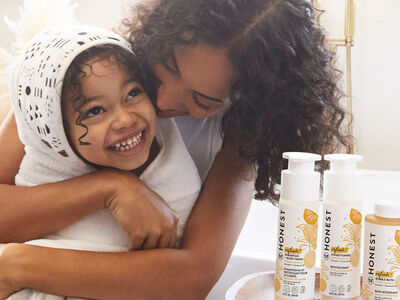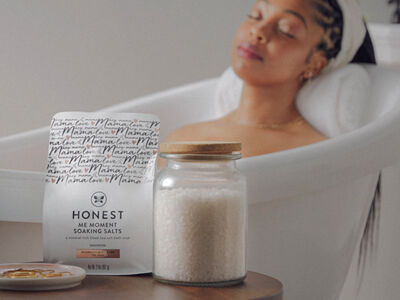For some parents, changing diapers can feel like a full-time job. How many diapers do you go through in a day? 5? 10? Maybe even more. If your house is starting to feel like a diaper factory, you’re not alone. Babies can’t seem to go through them quick enough, and then, you’re left with what appears like piles and piles of dirty diapers. How do you achieve baby diaper disposal without it spreading germs and being smelly? There are some tricks to the disposable diaper trade, which keeps everything as fuss- and mess-free as possible.
The first step to knowing how to dispose of diapers is to buy a separate diaper bin with a lid that is easy to open. When disposing of diapers you want one that either opens automatically or has a foot pedal so when you throw away your baby’s diapers your hands don’t have to touch it. Line the trash pail with a plastic bag and make sure it’s stable enough that it won’t be easily knocked over. Keep it close by to your baby’s changing station for easy baby diaper disposal. Once it’s full, empty it right away and replace it with a fresh bag and spray with room deodorizer to get rid of any odor.
To reduce the smell of the collection of diapers that are sitting in your trash bin as much as possible, tightly roll up any used wipes in the diaper and secure it with the adhesive sides. For extra smelly diapers, take them to the outside garbage rather than waiting until the bin is full. Wash your hands immediately after to get rid of germs and count the hours until the next diaper change.
Tips for Diaper Changes
For anyone who may not be sure of how to change a baby’s diaper, choose a flat surface, and lie your baby on their back. Place the diaper underneath their bottom and bring the front of it over their stomach, securing in place with the adhesive sides. Make sure the leg cuffs are out rather than tucked in to avoid leaks and reduce chafing against your baby’s skin.
After you’ve gone through the motions a few times, you’ll soon have a system down that’s quick and efficient to handle even the squirmiest baby. Parents start with the basics and then find their own special ways that work for them. Before you become a diaper changing pro, here are some helpful tips that make diaper changes less smelly and more stress-free.
-
Keep everything you need close. That includes baby wipes, diaper rash cream, and of course, a clean diaper. Babies typically aren’t patient when it comes to changing time, so speed is important. Having everything within arm’s reach is key to avoid too much fussing.
-
Always pack extra diapers. Whenever you’re headed out for the day, it’s always a good idea to pack extra diapers. You never know when they’ll come in handy, and it’s a cause for panic if you run out when on-the-go. Depending on how long you’ll be away from home, consider packing overnight diapers for added leak protection and peace of mind. If you have different diaper bags, make sure each one is fully stocked before you’re ready to head out the door.
-
Pack a few plastic zipper bags to hold dirty diapers in the diaper bag. There may not always be a trash can close by and you don’t want to let a dirty diaper hang out in your bag for a long period of time. A plastic bag helps to reduce the smell and spread of germs until you can find a place to dispose of it.
-
Sanitize your diaper bin regularly. In between changing plastic bags, spray the inside and outside with a household cleaner and wipe it down thoroughly to kill germs and prevent bacteria. If your bin still smells after cleaning, sprinkle in a few teaspoons of baking soda or a couple of dryer sheets to help absorb rather than mask the smell.
-
Use eco-friendly products when available. Currently, disposable every day and overnight diapers go to the landfill. By using sustainable products, you are helping the environment by using responsibly-sourced materials, which means less waste overall.
Last but not least, you’ll want to make sure you’re wrapping your baby up with the best diaper for their sensitive skin. With our hypoallergenic disposable diapers, you can feel good about using a super absorbent and soft diaper that uses plant-based and sustainably harvested materials. The liner fits comfortably against a baby’s skin, and the multi-layer design holds 17x its weight in fluid. It gives you and your baby the best of it all: powerful absorbency and softness against the skin Learn more about what makes a good diaper.
Fortunately, it’s only a short period that babies need their diapers changed frequently. Then, it starts to taper off as they enter their toddler years. Learning how to dispose of diapers in a hygienic way limits the smell and helps keeps things more sanitary as you make it through their first several months.
Changing diapers can be a process, but by the time you’ve learned how to change a baby’s diaper and the best ways to handle baby diaper disposal, it’ll be time for their next new adventure with potty training. As quick and steady as they seem to come, dirty diapers will soon be a thing of the past.
We aim to provide you with the most honest and credible information possible. This article was reviewed for accuracy by The Honest Team and was written based on trusted sources that are linked at the bottom of the article.
blog_review_statement




